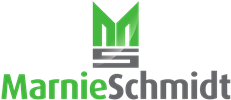 8.3 Design and development of products and services
8.3 Design and development of products and services
I’d like to start this week’s discussion with a big thank you to one of my readers who brought to my attention a mistake I made last week. Somehow, as I wrapped up week 27 with 8.2.1, and began week 28 with 8.2.3, I skipped over 8.2.2. These two sections are so similar, with 8.2.2 being the “determination” of requirements and 8.2.3 being the “review” of requirements, I mistakenly skipped over 8.2.2. Suffice it to say, there is first the determination of requirements, which is fairly well covered in 8.2.1, followed by their review. If any of you have any additional discussion or questions relative to 8.2.2, please feel free to bring them up this week. Thanks R Botha for reading and thanks for the heads up!
Now onto 8.3. 8.3.1 General states:
“Where the detailed requirements of the organization’s products and services are not already established or not defined by the customer or by other interested parties, such that they are adequate for subsequent production or service provision, the organization shall establish, implement and maintain a design and development process.”
In the past, companies could exclude this clause if they had no responsibility for design or development of their products. In other words, if their products or services were designed by their customers, and the organization simply produced them to their specifications, a design process was not required.
However, the clarifying notes now suggest there should be some type of design discipline as it pertains to the design of processes to produce their products and services.
“NOTE 1 The organization can also apply the requirements given in 8.3 to the development of processes for production and services provision
NOTE 2 For services, design and development planning can address the whole service delivery process. The organization can therefore choose to consider the requirements of clauses 8.3 and 8.5 together. ”
8.3 uses the logic of including “inputs”, “controls” and “outputs” in the design of processes and then goes on to tackle the control of externally provided products and services.
8.5 takes a slightly different approach, but there is a lot of overlap between these two sections in regard to laying out a process. It goes on to address additional logistics of order fulfillment such as product traceability, customer owned property, preservation and delivery of product while in possession by the organization, etc.
This is a nice clarification, in my opinion, in this revision. This is because previously, an organization had the prerogative to exclude the design section (and of course, many organizations did). But there was some good stuff in that section that, if excluded, was not included in the quality management system.
Now, the ability to wrap these two sections together in the approach to a solid design process – be it for product/service or simply for the process of producing the product or service, is a plus and adds something substantial to the quality system.
THIS WEEK’S HOMEWORK
Evaluate the structure of your current QMS. If you previously excluded “design”, you’ll need to incorporate it somewhere. In the beginning, your organization identified the necessary processes and perhaps even described them as process flow diagrams with inputs and outputs and their interaction was clearly defined. It’s a little awkward that now they tell us more about the requirements of design of the processes, but there has been discussion right along and there will continue to be more discussion about this topic. Because, after all, the focus of the standard is to be process focused. The creators of this new revision have done a much better job designing the right requirements to make that happen.
You may combine the two requirements into your own unique process, or address them separately, it’s your preference. It’s your organization’s QMS and it should work for you!
Stay involved and engaged – SUBSCRIBE!
